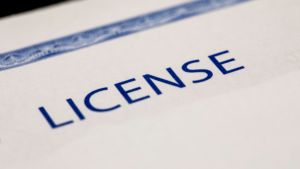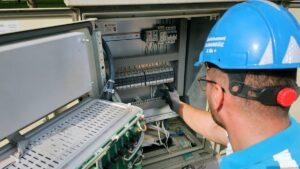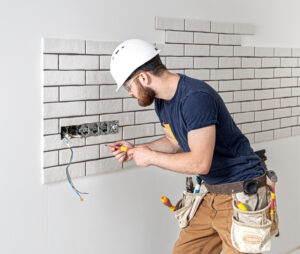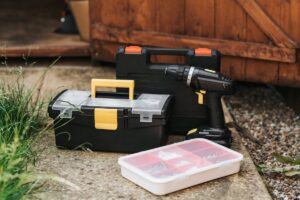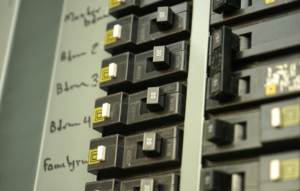Power strips are essential tools in modern homes and offices, allowing for the expansion of available electrical outlets. However, while convenient, they carry significant safety risks if used incorrectly. In states like Alabama and Georgia, where seasonal weather can lead to power surges and heavy electrical demands, understanding power strip safety is not just advisable—it’s crucial. This article will explore the most common mistakes people make when using power strips and offer practical advice on how to avoid these pitfalls to ensure the safety and longevity of your electrical system.
-
Overloading the Power Strip
One of the most frequent and dangerous mistakes is overloading a power strip by plugging in too many devices. Each power strip is designed to handle a specific electrical load, usually indicated in watts or amps. Exceeding this limit can lead to overheating, which increases the risk of electrical fires.
The Science Behind Overloading
When you plug multiple devices into a power strip, each device draws a certain amount of current. The combined load of these devices should never exceed the power strip’s rated capacity. For instance, a typical power strip might be rated for 15 amps or 1800 watts. Plugging in several high-wattage devices—such as space heaters, refrigerators, or microwaves—can easily surpass this limit.
Real-World Implications
According to the National Fire Protection Association (NFPA), electrical distribution systems, which include power strips, were the third leading cause of home fires in the U.S. between 2014 and 2018. Overloading a power strip is a common cause of such fires. In Alabama and Georgia, where the use of heating and cooling devices is prevalent due to the climate, the risk of overloading power strips is particularly high.
How to Avoid Overloading
- Calculate the Load: Before using a power strip, calculate the total wattage of all devices you plan to plug in. Ensure that this total is well within the power strip’s rated capacity.
- Spread Out High-Wattage Devices: If you need to use multiple high-wattage devices, distribute them across different circuits or use separate power strips, ensuring that each strip stays within safe operating limits.
- Invest in Heavy-Duty Power Strips: For environments where you regularly use high-wattage devices, consider investing in heavy-duty power strips designed to handle larger loads.
-
Using Power Strips with High-Power Appliances
A common misconception is that power strips can handle any appliance as long as there are available sockets. However, power strips are not designed to manage the demands of high-power appliances such as refrigerators, air conditioners, or space heaters. Plugging these appliances into a power strip can quickly lead to circuit overload and pose a serious fire hazard.
Why High-Power Appliances Are a Risk
High-power appliances draw significant current, especially when they cycle on and off. For example, an air conditioner can draw up to 15 amps when it first starts, nearly maxing out a standard power strip’s capacity by itself. This sudden surge in power demand can overload the power strip, leading to overheating and potentially causing a fire.
Case Study: Alabama Apartment Fire
In a 2019 incident in Birmingham, Alabama, a fire broke out in an apartment complex due to a space heater being plugged into a power strip. The heater overloaded the strip, which was not rated for such high-wattage devices, leading to an electrical fire that caused significant damage. Fortunately, there were no injuries, but the incident highlighted the importance of proper power strip usage.
How to Avoid This Mistake
- Direct to Wall Outlets: Always plug high-power appliances directly into wall outlets to ensure they receive the necessary power without overloading a power strip.
- Install Dedicated Circuits: For critical appliances, consider installing dedicated circuits. This setup, handled by a professional electrician, provides a direct line from the circuit breaker to the appliance, reducing the risk of overloading.
-
Daisy-Chaining Power Strips
Daisy-chaining, or connecting multiple power strips together, is another dangerous practice that can lead to overloading. This technique is often used in settings where there are not enough outlets available, but it significantly increases the risk of electrical fires.
The Dangers of Daisy-Chaining
When you daisy-chain power strips, the current drawn by all the devices passes through each strip in the chain. This cumulative load can exceed the capacity of not just one, but all of the power strips in the chain, creating multiple points of potential failure.
A Georgia Office Fire
In a 2021 incident in Atlanta, Georgia, a small office fire was traced back to daisy-chained power strips. Employees had connected multiple power strips to accommodate a large number of computer equipment and office devices. The excessive load led to overheating and eventually a fire. While the fire was contained, it disrupted business operations for several days and led to costly repairs.
How to Avoid Daisy-Chaining
- Install Additional Outlets: If you find yourself needing more outlets, it’s safer to have additional outlets installed by a licensed electrician than to rely on daisy-chaining power strips.
- Choose a Larger Power Strip: If more sockets are needed, opt for a larger power strip that offers sufficient outlets for your needs, but always be mindful of the total load.
- Use Power Distribution Units (PDUs): For professional or office settings with high power demands, consider using PDUs, which are designed to handle heavier loads and provide safer distribution of power.
-
Using Power Strips in Wet or Humid Environments
Power strips are not designed to be used in wet or humid environments. Doing so increases the risk of short circuits, electric shocks, and fires. Kitchens, bathrooms, basements, and outdoor areas are particularly problematic.
Understanding the Risk
Water is a good conductor of electricity, and when moisture enters a power strip, it can create a short circuit between the live wires, leading to sparks, shocks, or even a fire. This risk is amplified in areas like Georgia and Alabama, where high humidity and frequent thunderstorms are common.
Case Study: Outdoor Event in Georgia
During a summer event in Savannah, Georgia, a power strip was used to power lights and sound equipment outdoors. An unexpected rain shower led to moisture entering the power strip, causing a short circuit that knocked out power to the entire event. Fortunately, no one was injured, but the incident underscored the importance of using the correct equipment in wet conditions.
How to Avoid This Risk
- Keep Power Strips Dry: Ensure that power strips are always kept in dry, indoor locations. Avoid placing them in areas where they could be exposed to water or excessive humidity.
- Use GFCI Outlets: Ground Fault Circuit Interrupter (GFCI) outlets are designed to shut off power if they detect moisture, reducing the risk of shock or fire. These should be used in areas like kitchens, bathrooms, and outdoor locations.
- Invest in Weatherproof Power Strips: If you need to use a power strip in an outdoor or potentially wet environment, invest in weatherproof power strips designed specifically for such conditions.
- Ignoring the Condition of the Power Strip
Over time, power strips can deteriorate due to regular wear and tear. Frayed cords, cracked casings, and loose connections can all develop, leading to potential hazards if not addressed.
Why Regular Inspection is Crucial
Power strips are often moved, unplugged, and re-plugged, which can wear out internal components. This wear can lead to poor connections that generate heat, increasing the risk of a fire. Additionally, exposure to dust, dirt, and heat can degrade the materials, making them more prone to failure.
Practical Tips for Monitoring Condition
- Regular Inspections: Routinely inspect your power strips for any signs of damage. Look for cracks in the casing, frayed cords, and loose plugs. If you find any damage, replace the strip immediately.
- Check for Heat: If a power strip feels warm or hot to the touch, this is a sign that it may be overloaded or failing. Unplug it immediately and inspect it for damage.
- Replace Old Power Strips: If your power strip is more than three to five years old, consider replacing it, especially if it shows signs of wear. Older strips are more likely to fail and may not meet current safety standards.
-
Placing Power Strips in Concealed or Confined Spaces
It might be tempting to hide power strips behind furniture or under rugs for aesthetic reasons, but this practice can restrict airflow and lead to overheating.
Understanding Heat Build-Up
Power strips need proper ventilation to dissipate the heat generated by the electrical current passing through them. When placed in confined spaces, the lack of airflow can cause the strip to overheat, potentially igniting surrounding materials like carpet or upholstery.
Safety Tips for Proper Placement
- Ensure Ventilation: Place power strips in well-ventilated areas where air can circulate freely. Avoid placing them under rugs, behind curtains, or in any location where heat can build up.
- Use Furniture with Built-in Outlets: If aesthetics are a concern, consider furniture with built-in electrical outlets, which allows you to keep power strips out of sight without compromising safety.
- Keep Accessible: Position power strips where they are easily accessible in case you need to unplug devices quickly during an emergency.
-
Using Inappropriate Extension Cords with Power Strips
While extension cords can be useful for extending the reach of a power strip, using the wrong type of extension cord can be dangerous. Light-duty extension cords are not designed to handle the same electrical load as heavy-duty cords, and when combined with a power strip, this mismatch can lead to overheating and fire hazards.
Choosing the Right Extension Cord
- Match the Load Capacity: Ensure the extension cord you use has a load capacity that matches or exceeds that of the power strip. For example, if your power strip is rated for 15 amps, the extension cord should also be rated for 15 amps.
- Length Matters: The longer the extension cord, the more resistance it has, which can reduce the voltage and increase the load on the power strip. Use the shortest extension cord possible to minimize this effect.
Closing Thoughts on Maintaining Electrical Safety
Understanding and following power strip safety guidelines is essential to protecting your home or office from electrical hazards. By avoiding common mistakes—such as overloading power strips, using them with high-power appliances, and neglecting their condition—you can significantly reduce the risk of electrical fires, short circuits, and other dangerous incidents. In Alabama and Georgia, where weather conditions and electrical demands can vary greatly, taking these precautions is particularly important. Always prioritize safety by using power strips correctly, choosing the right equipment, and performing regular inspections to ensure everything is in working order.
Remember, safety doesn’t end with the proper use of power strips. Regular electrical maintenance and understanding the overall capacity of your home’s electrical system are crucial steps in preventing accidents. Always consult a professional electrician if you’re unsure about your electrical setup, and never hesitate to replace or upgrade your power strips to meet your household’s needs. By staying vigilant and informed, you can protect your property and loved ones from the hidden dangers of everyday electrical devices.


